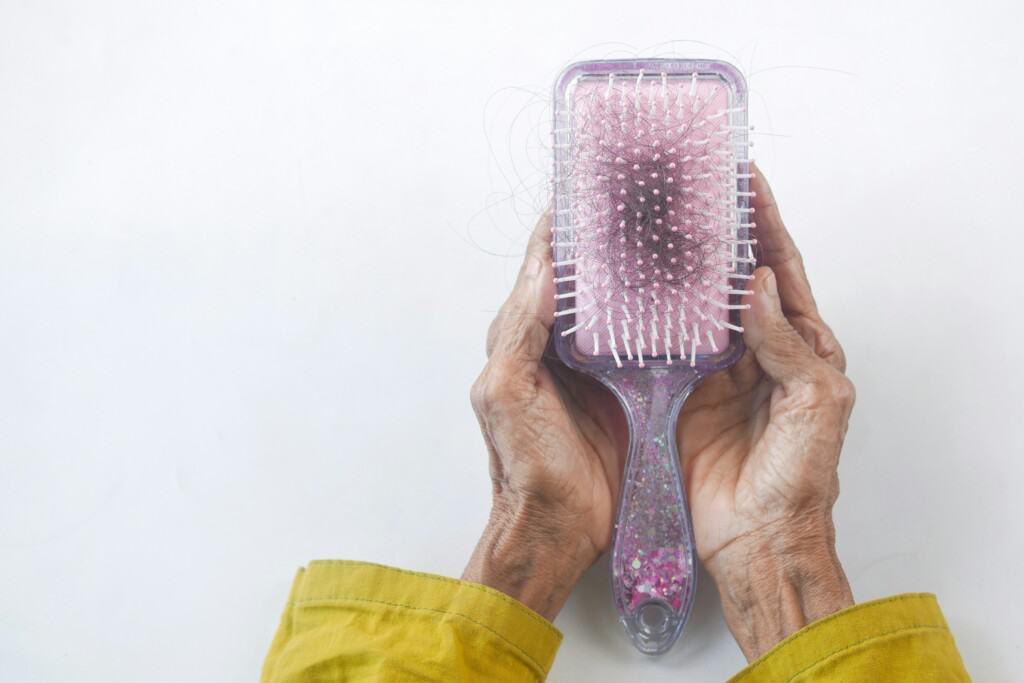| I see a number of patients who are worried about their hair; in some cases, it is thinning, but sometimes, they are losing it altogether.
Often, patients think this is just a phase, so they wait to see what happens or maybe try a few home remedies. When they come into my office for care, they are really concerned, often bringing in a bag of hair that has fallen out or a list of supplements they have tried.
So, let’s talk about how I address this. Overall, we want to understand why the hair loss started and rule out any contributing medical conditions. Then, we want to provide nutrients for building good hair.
How do you lose hair? As it turns out, there are many ways that we categorize into two categories: scarring and non-scarring.
Non-Scarring hair loss
- Alopecia areata
- Androgenetic hair loss
- Telogen effluvium
- Anagen effluvium
Scarring hair loss
- Lupus (the discoid variant)
- Lichen planopilaris
- Central centrifugal cicatricial
- Alopecia
- Radiation-related hair loss
Mixed hair loss
- Trichotillomania
- Traction alopecia
Remember this: Hair constantly replaces itself. In fact, 2% of your hair is falling out and being replaced at any given time. But, if you see excessive hair loss, you might want to get testing to see if any of the above conditions apply to you.
New hair has a long active growth period of 2-6 years. Things move a bit slow, and because of this, most treatments take a while to implement. Patience is necessary for women and men who are trying to figure out ways to get that thick hair back or fill in bald spots.
If you want to encourage healthier hair, here are some basic tips:
- Eat a diet rich in plant-based foods and get adequate protein.
- Drink plenty of water.
- Focus on sleep. Adequate sleep helps with the circadian rhythm, sex hormones, and inflammation; all of these factors drive healthy hair growth.
Now, on top of these basics, I like to check basic labs to be sure these levels are optimal:
- Thyroid and iron levels are important since both hypothyroid and anemias can cause hair loss.
- Biotin can strengthen what you have in your hair and nails but doesn’t really help with new growth. We don’t want to take more than necessary because it can affect our thyroid or heart medication efficacy; 2.5-5 mg is plenty, and more than 10 mg is not needed. You may have to take it for six months before it gets integrated into your body.
- Vitamin D appears to stimulate dormant hair follicles. Testing Vitamin D levels is discouraged these days, but it is a good idea when we are taking it as a supplement.
- Vitamin A is tricky because too much preformed Vitamin A can prevent hair growth. So, I recommend no more than 25,000 IU daily, and in general, there should be a specific reason if you have been on Vitamin A for over a month.
- Zinc can influence cell differentiation, and patients with hair loss generally have lower zinc as well.
- Silicon, particularly cs-OSA, can influence hair growth after nine months or so, but the absorption is highly dependent on digestion.
- Selenium can be particularly helpful if a thyroid condition is involved.
There are many other methods for dealing with hair loss that I will mention quickly:
- DIM
- Maca
- Minoxidil
- Low-level laser light therapy (LLLT) or red and near-infrared light
- Platelet Rich Plasma (for bald spots but also genetic hair loss)
- Cosmetic tools or camouflage (Scalp coloring with pens, pencils, sprays, or powders; hair pieces, extensions, and weaves)
Photo by Towfiqu barbhuiya on Unsplash |

